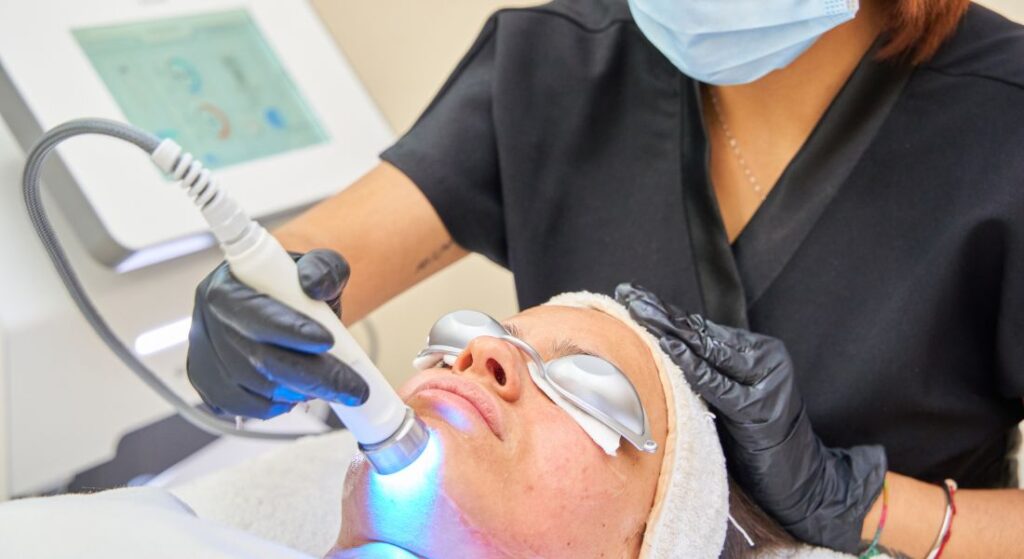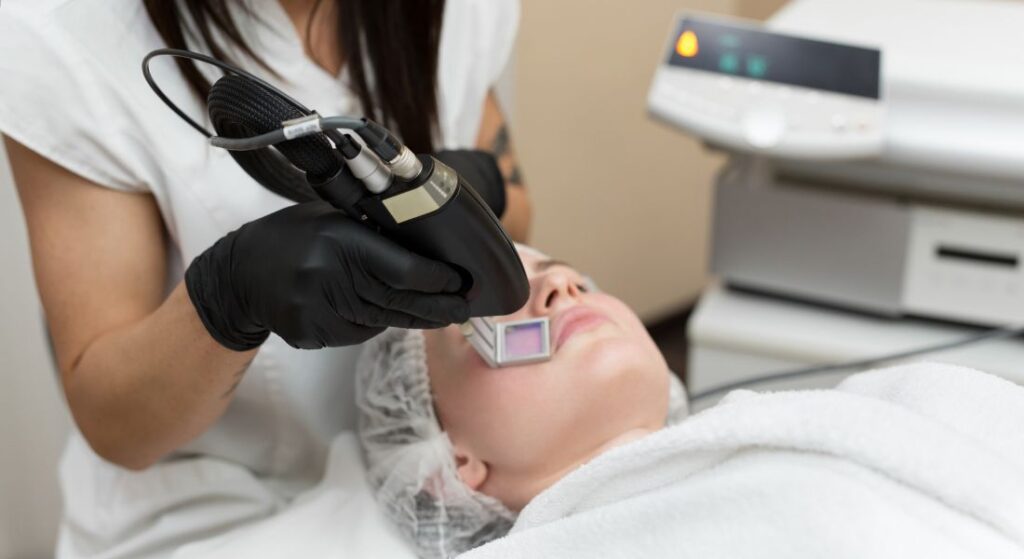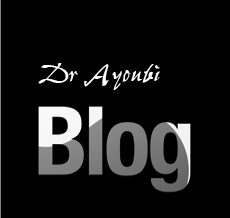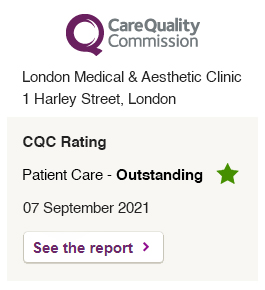
If you’re thinking about improving your skin’s texture, reducing wrinkles, or softening scars, you’ve probably come across CO2 and Erbium laser resurfacing. Both treatments are powerful, effective, and widely used yet they work in different ways and offer different benefits. Choosing the right one can feel confusing, especially when you’re trying to understand downtime, recovery, and what kind of results you can realistically expect.
That’s why I want to take you through everything you need to know in clear, easy-to-understand language. Whether you’re dealing with deep wrinkles, fine lines, acne scars, pigmentation, or just want fresher, smoother skin, understanding the differences between these two lasers will help you make the right choice.
By the end of this guide, you’ll have a complete understanding of how both lasers work, who they’re best suited for, how long recovery takes, and which concerns each one treats most effectively. You’ll also get a clearer picture of the results you can expect, how many sessions you may need, and what kind of aftercare helps you heal smoothly. With this knowledge, you can feel confident when choosing the resurfacing treatment that truly matches your goals, your lifestyle, and the level of improvement you want to achieve. Whether you’re aiming for dramatic rejuvenation or a more subtle refresh, you’ll be equipped to make an informed, comfortable decision.
What Is Skin Resurfacing?
Skin resurfacing is a treatment that removes damaged skin cells and stimulates new collagen growth. It’s used to:
– Smooth wrinkles
– Improve texture
– Reduce pigmentation
– Minimise scars
– Tighten skin
– Improve overall skin quality
CO2 and Erbium lasers are two of the most advanced options for resurfacing because they allow precise control over depth and intensity, giving you customised results.
CO2 vs Erbium Laser: The Quick Summary

Before we dive into the details, here’s a simple overview.
CO2 Laser
– Deep resurfacing
– More dramatic results
– Longer downtime
Best for deep wrinkles, severe texture, and scars
Erbium Laser
– Milder to moderate resurfacing
– Less heat, faster healing
– Suitable for lighter skin types and moderate concerns
– Lower risk of pigmentation changes
Now let’s break everything down so you can understand exactly what each laser offers.
How CO2 Lasers Work
CO2 lasers use carbon dioxide to create a beam of infrared light that penetrates deep into the skin. The laser removes layers of damaged skin while heating the tissue underneath.
What CO2 energy does:
– Removes skin with precision
– Stimulates strong collagen production
– Tightens deeper layers
– Creates noticeable improvement
CO2 is known as an aggressive resurfacing laser, which is why it’s ideal for more advanced ageing or scarring.
How Erbium Lasers Work
Erbium lasers use a wavelength that is absorbed by water in the skin. Because human skin contains lots of water, the Erbium laser can remove damaged tissue with high precision and minimal heat.
What Erbium energy does:
– Removes thinner layers of skin
– Produces less heat
– Reduces risk of skin damage
– Allows faster recovery
Erbium resurfacing is often called a gentler but effective alternative to CO2.
Depth of Treatment: CO2 vs Erbium
CO2 Laser Depth
CO2 lasers penetrate deeper into the skin, making them suitable for:
– Deep-set wrinkles
– Advanced sun damage
– Thickened texture
– Deep acne scars
– More severe ageing
Because the penetration is deeper, the rejuvenation is stronger but downtime is longer.
Erbium Laser Depth
Erbium lasers remove thinner layers with reduced heat, making them suitable for:
– Fine to moderate wrinkles
– Mild sun damage
– Light scarring
– Uneven texture
They create gentler resurfacing while still stimulating collagen.
Heat Levels and Collage Stimulation
Heat plays a major role in laser resurfacing.
CO2 Laser = More Heat
This means:
– Strong collagen stimulation
– Greater tightening effect
– More dramatic results
– Higher risk of pigmentation issues if not used correctly
CO2 is ideal when you want a significant transformation.
Erbium Laser = Less Heat
This means:
– Less risk of hyperpigmentation
– Faster recovery
– Less swelling
– Lower risk for darker skin tones
The collagen boost is gentler but still noticeable.
Downtime: Which Laser Heals Faster?

One of the biggest differences between CO2 and Erbium is recovery time.
CO2 Laser Downtime
Expect:
– 7–14 days of visible downtime
– Redness lasting weeks
– Peeling for several days
– Tightness and swelling
– Careful aftercare required
CO2 laser is a more intensive commitment, but most people feel the results justify the downtime.
Erbium Laser Downtime
Expect:
– 3–7 days of visible downtime
– Mild redness
– Faster peeling
– Less swelling
– Faster return to work
If your schedule is tight, Erbium may be the more practical choice.
Pain and Comfort Levels
Both procedures use numbing to reduce discomfort.
CO2 Laser
– More heat
– More intensity
– May require additional numbing or cooling
Erbium Laser
– Less heat
– More comfortable
– Shorter treatment times
If you’re sensitive, Erbium may feel easier to tolerate.
Who Should Choose CO2 Laser Resurfacing?
You may benefit most from CO2 laser if you have:
– Deep wrinkles
– Pronounced skin laxity
– Advanced sun damage
– Deep acne scars
– Uneven skin texture
– Thick or rough skin
– Strong signs of ageing
CO2 is the most powerful resurfacing option when you want dramatic rejuvenation.
Who Should Choose Erbium Laser Resurfacing?
Erbium may be the better choice if you have:
– Fine to moderate wrinkles
– Mild texture issues
– Surface-level pigmentation
– Early ageing
– Thinner or sensitive skin
– A preference for shorter downtime
Erbium is popular for people wanting real improvement without a long recovery.
Suitability for Skin Types
Skin type plays a major role in choosing the right laser.
CO2 Laser & Skin Types
CO2 lasers are generally safest for:
– Fair to light skin (Fitzpatrick I–III)
Darker skin tones have a higher risk of:
– Hyperpigmentation
– Hypopigmentation
– Prolonged redness
That doesn’t mean CO2 is impossible for darker skin, but it requires very controlled, fractional settings and an experienced practitioner.
Erbium Laser & Skin Types
Erbium lasers are safer for more skin tones because they induce less heat.
Suitable for:
– Light to medium-dark skin (Fitzpatrick I–IV)
The lower heat reduces the risk of pigment issues.
Results: What Improvements Can You Expect?
Both lasers deliver impressive results but they differ in intensity.
Results from CO2 Laser
Expect:
– Dramatic tightening
– Deep wrinkle reduction
– Major scar improvement
– Strong collagen renewal
– Long-lasting results
CO2 generally provides the most transformative outcome.
Results from Erbium Laser
Expect:
– Smoother skin
– Brighter tone
– Reduced fine lines
– Moderate scar improvement
– Natural rejuvenation
Results look more subtle but still significant.
How Many Sessions Do You Need?

CO2 Laser
Most people need one session, with optional touch-ups later.
Erbium Laser
You may need:
– One session for strong improvement, or
– Two to three gentler sessions for gradual resurfacing
Which Laser Is Best for Acne Scarring?
CO2 Laser = Best for Deep Scars
If you have deep pitted scars, CO2 is usually the superior choice.
Erbium Laser = Best for Mild Scarring
For shallow acne scars or textural issues, Erbium can give excellent improvement without long downtime.
Which Laser Is Best for Wrinkles and Ageing?
CO2 Laser = Deep wrinkles and laxity
Erbium Laser = Fine lines and early ageing
Safety Considerations
Laser resurfacing should always be performed by an experienced practitioner, especially with CO2 lasers due to the depth and heat involved.
Always discuss:
– Medical history
– Medications
– Skin tone
– Downtime availability
– Sensitivity and healing
– Skin conditions like eczema or rosacea
Combination Treatments: Using Both Lasers Strategically
Many practitioners use a combination approach.
For example:
– CO2 for deeper areas (around the mouth or scars)
– Erbium for gentler resurfacing on the rest of the face
This creates powerful results with balanced recovery.
Maintenance Treatments
To prolong your results, you may consider:
– Annual Erbium “refresh” sessions
– Good skincare (retinoids, antioxidants, SPF)
– Hydration and healthy lifestyle
– Occasional laser touch-ups depending on ageing
CO2 results can last several years, while Erbium benefits can last around one to two years.
Frequently Asked Questions:
1. Which laser is better for deep wrinkles CO2 or Erbium?
CO2 is generally the stronger choice for deep wrinkles because it penetrates more deeply into the skin and produces a more intense collagen-stimulating effect. This allows it to tighten and resurface skin that shows advanced signs of ageing. Erbium can soften fine to moderate wrinkles, but it doesn’t reach the same depth as CO2, so the results tend to be gentler and more suitable for early ageing.
2. Is Erbium laser safer for darker skin tones?
Yes, Erbium laser is typically safer for darker skin tones because it produces far less heat compared to CO2. Lower heat means a lower risk of post-inflammatory hyperpigmentation or hypopigmentation. CO2 can still be used on darker skin, but it requires fractional settings and an experienced practitioner who can customise the energy levels to minimise pigment risks.
3. How painful are these treatments?
Both lasers involve some level of discomfort, but numbing cream is used to make the treatment more manageable. CO2 tends to feel more intense because of the deeper penetration and higher heat, which can make the skin feel hot or tight during the session. Erbium feels milder in comparison, and many people find it easier to tolerate throughout the procedure.
4. How long does recovery take after CO2 laser?
CO2 laser requires a longer recovery period because the treatment is deeper. Most people experience redness, peeling and swelling for the first week, with visible downtime lasting anywhere from seven to fourteen days. Redness may continue for several weeks, and meticulous aftercare is important to support healing and prevent complications.
5. How long does recovery take after Erbium laser?
Erbium laser recovery is significantly faster because it removes thinner layers of skin and generates less heat. Most people heal within three to seven days, and the redness tends to fade more quickly compared to CO2. Peeling and dryness are mild, and many patients feel comfortable returning to work much sooner.
6. How long do the results last with each laser?
CO2 results often last several years because the treatment triggers strong collagen remodelling and deeper tissue tightening. Erbium results are also long-lasting but usually last around one to two years, depending on skin ageing, lifestyle, and sun exposure. Both treatments can be maintained with skincare, sun protection and occasional touch-ups.
7. Which laser is better for acne scars?
CO2 laser is typically the preferred option for deep or pitted acne scars because it penetrates deeply enough to break down scar tissue and rebuild collagen at a structural level. Erbium works well for mild or shallow scars, helping smooth the surface and improve texture, but it doesn’t reach as deep as CO2 for more severe scarring.
8. Can CO2 or Erbium lasers treat pigmentation?
Both lasers can improve pigmentation, but they do so differently. CO2 can remove deeper pigment and sun damage because it resurfaces multiple layers of skin, but the heat can sometimes cause temporary pigment changes, especially in darker skin tones. Erbium treats pigmentation more gently and with a lower risk of rebound pigmentation, making it a safer option for people with sensitive or medium-dark skin.
9. Do I need more than one session?
Most people need only one CO2 session because the treatment is powerful and delivers a dramatic improvement in a single appointment. Erbium may require one session for noticeable results, but people with milder concerns or those who prefer subtle resurfacing may choose to have two or three lighter sessions spaced several weeks apart.
10. Which laser should I choose if I have a busy schedule?
If downtime is a major concern, Erbium is the more suitable choice because the healing process is faster and the skin recovers more comfortably. CO2 offers the most dramatic transformation, but the two-week recovery period can be difficult for those with busy work or social commitments. If you want strong results with minimal interruption, Erbium provides an effective balance between improvement and convenience.
Final Thought: CO2 vs Erbium Resurfacing
Choosing between CO2 and Erbium laser resurfacing depends on your skin concerns, your desired level of improvement and how much downtime you can realistically accommodate. CO2 laser offers the most powerful resurfacing results, making it ideal for deep wrinkles, pronounced sun damage and advanced texture issues. Erbium laser, on the other hand, provides a gentler but still highly effective option with quicker healing and a lower risk of pigmentation changes, especially for those with sensitive or medium-dark skin tones. Understanding the strengths and limitations of each treatment helps you make a confident and informed decision.
If you’d like to explore these options further, visiting a trusted CO2 laser clinic in London can give you clearer insight into which approach best suits your skin goals. And if you’re considering CO2 laser clinic in London, you can reach out to us at London Medical & Aesthetic Clinic to discuss whether this procedure is the right choice for your needs and receive tailored advice based on your skin type and expectations.
References:
1. Hamilton, M.M. (2004) ‘Carbon dioxide laser resurfacing’, Archives of Dermatology, 140(4), pp. 461–466. Available at: https://pubmed.ncbi.nlm.nih.gov/15261165/
2. Levy, T. et al. (2024) ‘Expert consensus on clinical recommendations for fractional CO2 laser skin rejuvenation’, Lasers in Surgery and Medicine, [online]. Available at: https://pubmed.ncbi.nlm.nih.gov/39434507/
3. Ramsdell, W.M. (2012) ‘Fractional CO2 laser resurfacing complications’, Dermatologic Surgery, [online]. Available at: https://pmc.ncbi.nlm.nih.gov/articles/PMC3580977/
4. Borges, J. et al. (2014) ‘Fractional Erbium laser in the treatment of photo-aging’, Journal of Cosmetic & Laser Therapy, [online]. Available at: https://pmc.ncbi.nlm.nih.gov/articles/PMC4008055/
5. Nisticò, S.P. et al. (2021) ‘Erbium laser for skin surgery: A single-centre twenty-year experience’, Diagnostics, 8(12), 74. Available at: https://www.mdpi.com/2305-6320/8/12/74





